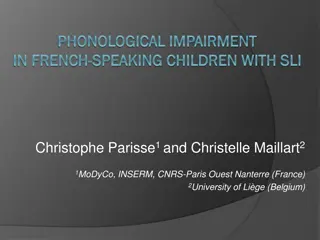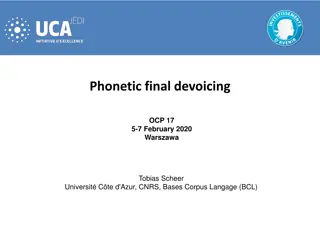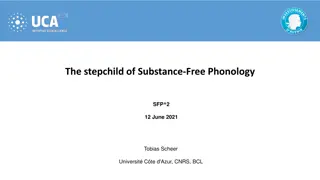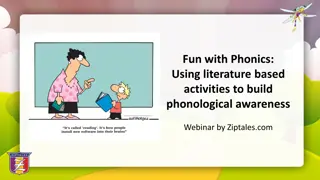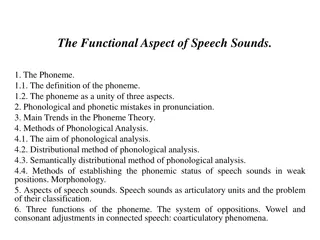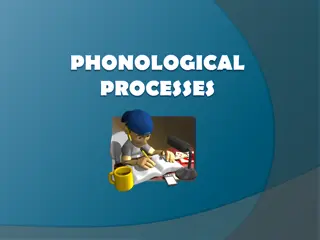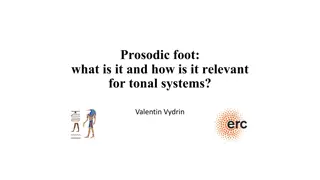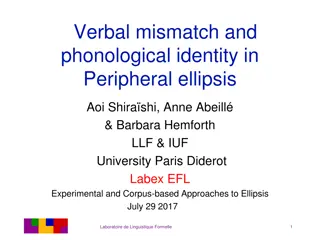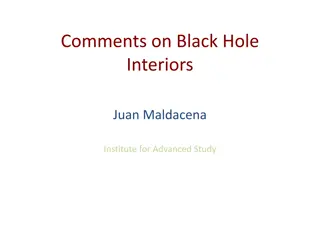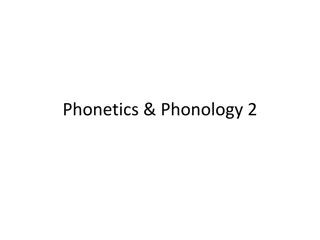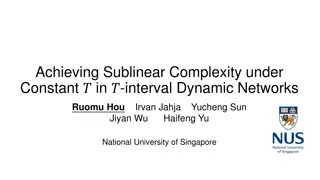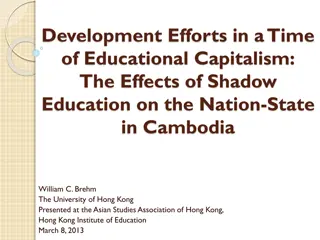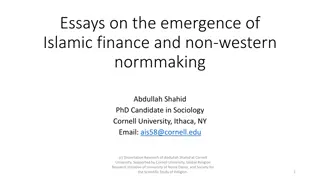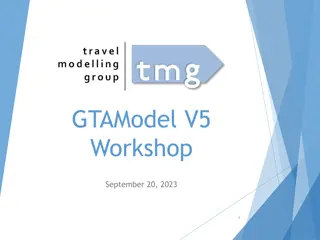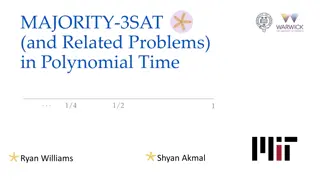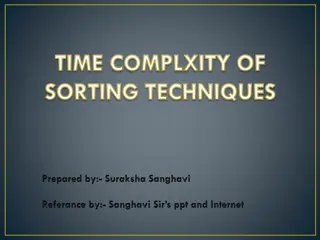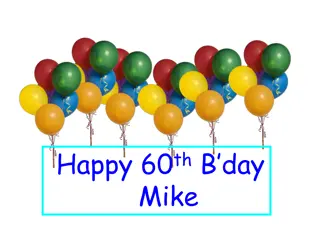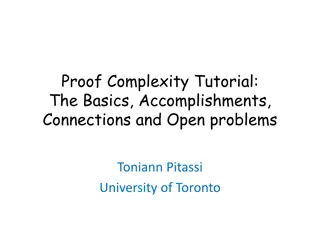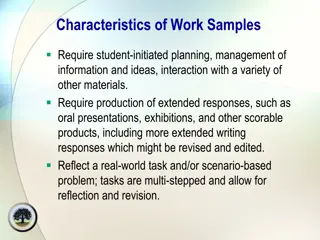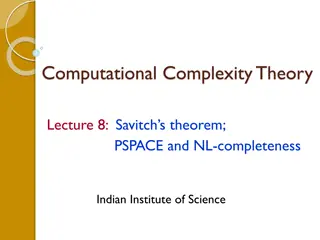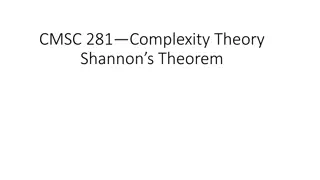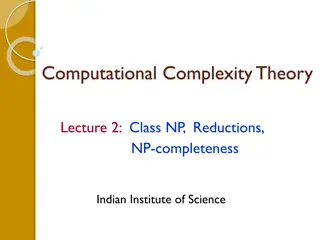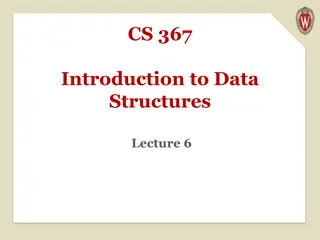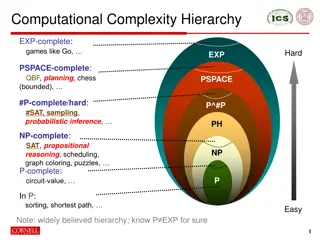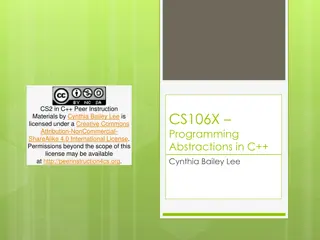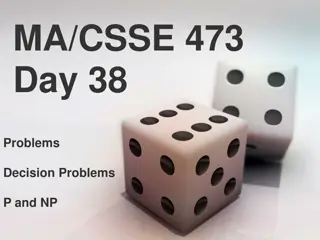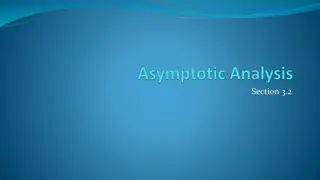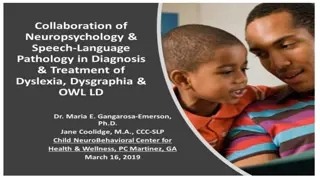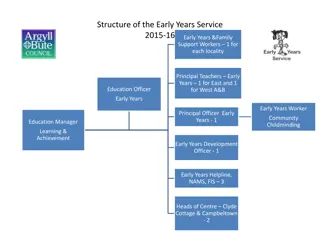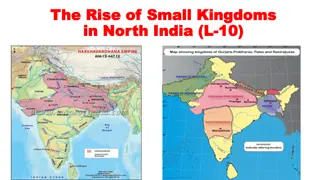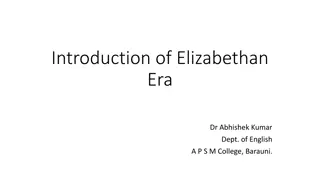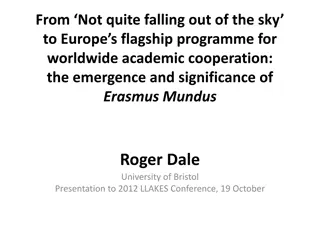Emergence of Phonotactic Complexity in Early Phonological Development
Barbara L. Davis, Ph.D., from The University of Texas at Austin, presents research on phonotactic complexity in early phonological development using the Texas Speech Production (TSP) database. The study examines the emergence of phonotactic properties in speech acquisition among typically developing children in Texas. Data collection methods, participants, and goals of the TSP project are discussed during the Phonbank Workshop in St. Johns, Newfoundland.
- Phonotactic Complexity
- Phonological Development
- Texas Speech Production
- Speech Acquisition
- Childhood Development
Download Presentation

Please find below an Image/Link to download the presentation.
The content on the website is provided AS IS for your information and personal use only. It may not be sold, licensed, or shared on other websites without obtaining consent from the author. Download presentation by click this link. If you encounter any issues during the download, it is possible that the publisher has removed the file from their server.
E N D
Presentation Transcript
EMERGENCE OF PHONOTACTIC COMPLEXITY IN EARLY PHONOLOGICAL DEVELOPMENT Barbara L. Davis, Ph.D. The University of Texas at Austin Austin, TX USA Phonbank Workshop St Johns Newfoundland July 26-30, 2010
.. complementary frameworks can yield complementary insights . (Fentress, 1992, p.1537)
GOAL Illustrate how the Texas Speech Production (TSP) database has been used to consider emergence of phonotactic properties in early speech acquisition. Phonbank Workshop, St Johns Newfoundland, July 26-30, 2010
THETSPDATABASE: PARTICIPANTS Longitudinal corpora, typically developing children Monolingual English language environment in Texas Collected monthly between7-36 months of age Background Testing: Hearing: Play audiometry, 25db at 500, 1, 2, and 4K Hz. Cognitive Development: The Battelle Developmental Screening Inventory (Newborg et al, 1984) Vocabulary Development: MacArthur Communicative Development Inventory (CDI) (Fenson et al, 1993). Phonbank Workshop, St Johns Newfoundland, July 26-30, 2010
THETSPDATABASE: DATA COLLECTION Hour free play: child, primary caregiver, research assistant. Toys provided + child allowed play with her toys. Wireless microphone systems clipped to clothing; transmitter in a fanny pack. Phonbank Workshop, St Johns Newfoundland, July 26-30, 2010
GOALOFTHETSPPROJECT Test movement-based phonetic perspective on early phonological acquisition. Phonbank Workshop, St Johns Newfoundland, July 26-30, 2010
FRAME-CONTENT PERSPECTIVE Generate robust explanatory phonetic principles Vocal patterns in acquisition Consideration of the processes underlying modern speaker s acquisition of the most complex human action and knowledge systems available in nature. Patterns in modern languages Examine evidence for non-arbitrary explanatory prinicples for considering patterns apparent in languages Patterns in putative vocalizations of earlier speakers Consider potential window into the historical process whereby early hominids began use of the auditory - vocal channel to effect communication
BIOLOGICAL-FUNCTIONAL APPROACHESTO PHONOLOGICAL ACQUISITION Acquisition of mature behavioral patterns and underlying knowledge accomplished by interactions of biological and social components of a complex system across acquisition Knowledge Patterns : Child internalizes neural/cognitive competencies rooted in manipulations in the external world Behavioral Patterns : Child assembles functionally adaptive behavioral patterns to respond to local contexts and exploit intrinsic dynamics of the production and perception systems. Phonological outcomes result from multiple interactions between heterogeneous aspects of a complex system Phonbank Workshop, St Johns Newfoundland, July 26-30, 2010
FRAME-CONTENT PERSPECTIVE MACNEILAGE & DAVIS 1990, 1993 Focus: Serial ordering tendencies in operation of the vocal apparatus Principle: Rhythmic mandibular oscillation Accompanied by phonation Aspect of the infant s movement system available for the initial approximation of the serial organization of adult speech by the onset of babbling: Phonbank Workshop, St Johns Newfoundland, July 26-30, 2010
FRAME-CONTENT PERSPECTIVE Unit Early Acquisition: Frame: oscillation of the mandible Depression-mouth opening for vowels Elevation-mouth closing for consonants Later Acquisition: Content: Ambient language segmental movement patterns that can be produced in serially organized language output Behavioral patterns based on production and perception are the foundation for emerging knowledge base. Phonbank Workshop, St Johns Newfoundland, July 26-30, 2010
FRAME-CONTENTPREDICTIONS Strong associations between close and open phases in mandibular oscillation cycles Without independent movements of other articulators Will result in within and across syllable regularities: Within Syllable CV Co-occurrence Hypothesis Labial (lip) consonants with central vowels Coronal (tongue tip) consonants with front vowels Dorsal (tongue body) consonants with back vowels Across Syllable Variegation Hypothesis Consonants: Dominance of manner over place Vowels: Dominance of height over front-back Phonbank Workshop, St Johns Newfoundland, July 26-30, 2010
PHONOTACTICPROPERTIESRELATEDTO SERIALREGULARITIESINCHILDOUTPUT I. Consonant Assimilation II. Consonant Clusters
CONSONANT ASSIMILATION: METHODS KIM & DAVIS ( INPREP) Participants 10 children from the TSP database Across the period of12 to 36 months of age Data Analysis 1467 assimilated word forms (i.e. 1,058 CVC and 409 CVCV; 7% of the entire corpus) 20,522 words in the corpus 17,775 CVC forms 2,747 CVCV forms Entire time period and four time periods in six month intervals (12-18; 18-24; 24-30; 30-36mos.) Phonbank Workshop, St Johns Newfoundland, July 26-30, 2010
PREDICTIONS:ASSIMILATION PATTERNSIN CHILDREN Prediction 1. Preference for forms that are available to the production system Prediction 2. Intervening vowel context effects Prediction 3. Word level effects (i.e. CVC and CVCV) Prediction 4. Decrease in movement capacity constraints over time Phonbank Workshop, St Johns Newfoundland, July 26-30, 2010
PLACE RESULTS Labial > Coronal > Dorsal assimilation Same trend in any consonant sequence in targets 1.00 0.81 0.80 Ratios 0.60 0.54 Labial assimilation Coronal assimilation 0.40 0.21 Dorsal assimilation 0.20 0.00 Place Assimilation Phonbank Workshop, St Johns Newfoundland, July 26-30, 2010
MANNER RESULTS Stop Nasal > Fricative assimilation Same trend in any consonant sequences in targets (except nasal- stop sequence) 1.00 0.91 0.79 0.80 Ratios 0.60 Stop Assimilation Nasal Assimilation Fricative Assimilation Other Assimilation 0.40 0.20 0.06 0.05 0.00 Manner Assimilation Phonbank Workshop, St Johns Newfoundland, July 26-30, 2010
P 1 Preferences: Discussion Labial > Coronal > Dorsal Movement-based hierarchy Labials are the most available for children involve mandibular movement only the basic frame (MacNeilage & Davis, 1990) Dorsals are the least available (Locke, 1983) involve the back of the tongue L > C > D frequencies in early words (Davis, et al., 2002) while input languages have more coronals than labials (Maddieson, 1984). Phonbank Workshop, St Johns Newfoundland, July 26-30, 2010
P1 Preferences: Discussion Stop Nasal > Fricative Movement-based hierarchy Stops and Nasals are more available involve release from complete closure of the oral tract during mandibular close-open oscillation (Davis, et al., 2002) Fricatives involve fine adjustments of varied degrees of closure Nasal assimilation more frequent in NS-OS targets The velum remains in the same status from the beginning throughout entire utterances (Matyear, et al., 1997) Phonbank Workshop, St Johns Newfoundland, July 26-30, 2010
P2 Vowel Context Effects Two of the three expected CV co-occurrence patterns were observed at above chance levels (i.e. above 1.0). Coronals with Front Vowels Dorsals with Back vowels. Vowel Front Central Back 1.04 1.06 0.69 Coronal Assimilation Consonant 1.02 0.93 1.15 Labial 0.77 0.95 1.85 Dorsal ( 2 =20.79, p < .001) Phonbank Workshop, St Johns Newfoundland, July 26-30, 2010
P2 Vowel Contexts Effect in CVC Only dorsal-back pattern at above-chance level Vowel Front Central Back 0.94 1.17 0.71 Coronal Assimilation Consonant 1.20 0.59 1.49 Labial 0.36 1.68 1.07 Dorsal ( 2 = 43.90, p < .001) Phonbank Workshop, St Johns Newfoundland, July 26-30, 2010
P2 Vowel Context Effects in CVCV All three predicted associations occurred at above chance levels. Vowel Front Central Back 1.34 0.83 0.61 Coronal Assimilation Consonant 0.59 1.51 0.34 Labial 1.04 0.59 2.38 Dorsal ( 2 = 50.55, p < .001) Phonbank Workshop, St Johns Newfoundland, July 26-30, 2010
P2 Discussion: VOWEL CONTEXT EFFECTS Intervening Vowel Effects on Linguals Vowel context effects: lack of independent movements of articulators during the transition from the consonant to the vowel. Coronal and dorsal assimilation: Intersyllabic constraints on tongue movement from C to V (and V to C). Why not labial-vowel effects? The tongue is not required for the consonant adjacent to the vowel (Davis, et al.,2002) Independent tongue movements (content) within syllables emerge with maturation and learning. Coronals and labials more free to vary in CVCs. More pressure from language input to match diverse CVCV targets. Phonbank Workshop, St Johns Newfoundland, July 26-30, 2010
P3 Word Level Effects CVCV CVC Vowel effects strong Vowel effects weak Back Front Central Front Central Back 0.94 1.17 0.71 1.34 0.83 0.61 Coronal Coronal 1.20 0.59 1.49 0.59 1.51 0.34 Labial Labial 0.36 1.68 1.07 1.04 0.59 2.38 Dorsal Dorsal ( 2 = 43.90, p < .001) ( 2 = 50.55, p < .001) Progressive assimilation (e.g. /tidi/ for kitty ) Regressive assimilation (e.g. /t t/ for cut ) Phonbank Workshop, St Johns Newfoundland, July 26-30, 2010
P3Word Level Effects Direction of Assimilation Progressive < Regressive in CVC 100% 80% 64% Percentages 60% 53% 47% Progressive Regressive 36% 40% 20% 0% * CVC CVCV Word Shapes Phonbank Workshop, St Johns Newfoundland, July 26-30, 2010
P3 Discussion: Word Level Effects Strong vowel effects in CVCV Regressive assimilation in CVC Movement motivation Intrasyllabic constraints strong in CVCV while more active tongue movement is involved in the final consonant in CVC (Redford, et al, 1997). Perceptual motivation The absolute final position (CVC_C2) in words is salient for children relative to non-final positions (Albin & Echols, 1996) Phonbank Workshop, St Johns Newfoundland, July 26-30, 2010
P4 Developmental Patterns Time periods: 12-18; 18-24; 24-30; 30-36mos. Frequency of assimilation was the highest at Time 2, then decreased. Labial & Coronal assimilation persisted. 350 Frequency of Place Assimilation 300 48 250 19 200 Dorsal Assimilation 191 9 114 150 Coronal Assimilation 95 Labial Assimilation 100 25 50 19 100 70 66 41 0 Time1 Time2 Time3 Time4 Time periods Phonbank Workshop, St Johns Newfoundland, July 26-30, 2010
P4 Developmental Patterns Vowel effects were strong at Times 1 and 2 then decreased. Persisted longer for CVCV than for CVC. Overall CVC CVCV Front vowel Central vowel Back vowel Front vowel Central vowel Back vowel Front vowel Central vowel Back vowel 1.44 0.77 0.00 2.16 0.80 0.67 1.16 2.07 0.48 1.06 1.21 0.92 0.00 0.00 1.28 1.16 1.10 0.48 1.06 1.11 0.67 1.09 1.34 0.71 0.72 0.83 0.48 2.57 1.27 0.77 0.96 1.03 1.06 0.86 1.20 1.18 0.79 0.95 1.34 0.46 0.32 1.89 0.91 0.00 2.68 0.96 1.23 0.69 0.99 1.30 1.02 0.71 1.49 1.05 0.57 1.22 0.74 0.73 0.00 2.14 Coronal assimilation Labial assimilation Dorsal assimilation Coronal assimilation Labial assimilation Dorsal assimilation Coronal assimilation Labial assimilation Dorsal assimilation Coronal assimilation Labial assimilation Dorsal assimilation 0.00 1.92 0.00 0.52 2.43 1.30 1.03 1.02 0.64 0.64 1.41 2.82 1.46 0.71 1.15 1.39 0.62 0.61 2.05 0.51 1.32 0.73 0.00 2.49 0.66 1.19 0.91 0.94 1.85 0.39 0.53 1.27 0.69 1.11 1.61 0.23 0.00 2.14 0.00 0.47 0.29 2.59 0.00 0.83 2.86 1.81 0.00 0.00 12 to 18 19 to 24 25 to 30 31 to 36 Phonbank Workshop, St Johns Newfoundland, July 26-30, 2010
P4 Discussion: Developmental Patterns Vowel effects decreased. CV movement-based constraints decrease over time. Preference for motorically available forms persists. Children continue to favor labial and coronal forms available to the movement system from the onset of word use. Acquisition of serial complexity follows a path of overcoming movement constraints to match ambient language word complexity guided by perceptual input from ambient language. Phonbank Workshop, St Johns Newfoundland, July 26-30, 2010
Discussion: Assimilation All four study predictions confirmed Results support Frame-Content principles Movement based principles guiding output patterns in formative period of phonological development Children move from highly movement types and movement sequences to ambient language specific levels of complexity Guided by socially mediated perceptual input to meet functional goals within their environment.. Phonbank Workshop, St Johns Newfoundland, July 26-30, 2010
TOPIC: INTERSYLLABIC COMPLEXITY CONSONANT CLUSTERS Prediction 1: Homorganic versus heterorganic clusters. Cluster constituents will be characterized by lack of place related movements (i.e. homorganic for place). Prediction 2: CV co-occurrence constraints in CCV clusters. There will be vowel context effects on CCV clusters (Jakielski,Davis & MacNeilage, in prep) Phonbank Workshop, St Johns Newfoundland, July 26-30, 2010
CONSONANT CLUSTERS: METHODS Participants 5 children from the TSP database From onset of babbling to 36 months of age Data Analysis All canonical babbling and word tokens analyzed. 2,334 clusters in babbling and words across study. 782 in babbling 1,552 in words. Data analyzed within 8 time intervals (7-8, 9-12, 13-16, 17-20, 21-24, 25-28, 29-32, 33-36 mos.) CCs in initial, medial, and final positions Phonbank Workshop, St Johns Newfoundland, July 26-30, 2010
P1 RESULTS: CLUSTERSINBABBLING Clusters in Initial, Medial, and Final Position: Babbling. -4/5 children conformed to this trend in all utterance positions -R conformed in final position only. Participant Totals Initial Medial Final Totals Participant Hm He Hm He Hm He Hm He C M N P R Total 59 50 14 40 0 18 3 0 0 3 45 24 92 10 7 11 0 3 0 15 29 22 33 33 0 7 95* 0 0 4 0 0 4 126 107 139 50 14 436* 57 29 3 7 0 18 155 110 146 50 32 493 163* 24 178* Context 187 207 99 493 Hm = homorganic; He = heterorganic. * Indicates significance at the .001 level. Phonbank Workshop, St Johns Newfoundland, July 26-30, 2010
P1 RESULTS: CLUSTERSINWORDS Clusters in Initial, Medial, and Final Position: Words. 4/5 infants showed predicted trend in all utterance positions. Infant R conformed to this trend in medial and final positions only. Hm = homorganic; He = heterorganic. * Indicates significance at the .001 level. Phonbank Workshop, St Johns Newfoundland, July 26-30, 2010
P1 DISCUSSION: CONSONANT CLUSTERS Over 4 times as many homorganic than heterorganic clusters (1,581 versus 371) All five participants produced more homorganic than heterorganic clusters. All but one participant (R) produced more homorganic clusters in both babbling and words. The percentage of homorganic clusters produced ranged from 72% for R to 100% for P. Extends the Frame-Content conceptualization: Limited tendency for articulators to make active changes from one consonant in a cluster to the next in any position . Phonbank Workshop, St Johns Newfoundland, July 26-30, 2010
P2 Results: Vowel Context Effects CCV-Words CCV Babbling Coronal-front and labial-central No dorsal-back. Other patterns: dorsal-front, labial-back. All three predicted patterns observed. Tendency for dorsal-central Back Front Central Front Central Back Coronal 1.46* 0.85 0.55 1.06* 0.90 0.93 Coronal 0.66 1.12* 1.33 0.95 1.08* 1.05* Labial Labial 0.97 1.00 1.04* 1.15* 0.77 0.83 Dorsal Dorsal Observed divided by expected values. *co-occurrence at a level greater than expected. Chance-level co-occurrence = 1.0. Observed divided by the expected values. * co-occurrence at a level greater than expected. Chance-level co-occurrence = 1.0. Phonbank Workshop, St Johns Newfoundland, July 26-30, 2010
P2 DISCUSSION: VOWELCONTEXTEFFECTS Consonant Clusters in Babbling and Words With one exception, the predicted consonant-vowel co- occurrence patterns were observed. Dorsal- back in words not observed. (Approx. 1% of CVs for the 5 children during period). Retention of CV co-occurrences, indicating lack of movement from C to V in context of C to C movement patterns Phonbank Workshop, St Johns Newfoundland, July 26-30, 2010
Conclusion Movement capacities are a primary motivation for resolution of assimilation patterns and cluster acquisition. Children use forms most available to their production system to reduce movement complexity required for word targets. Reduction in complexity interfaces with increase of functional load in developing phonological system interfaced with mental lexicon during the first three years of life. Perceptual influences guide precision in achieving ambient language complexity.
THEORETICAL FOUNDATION: EMBODIMENTAND COMPLEXITY SCIENCE Interpenetration between organism and environment creates the complex behavioral outcome as well as eventual competence. Oyama, 2000 Intelligent directed behavior may not be viewed as doing or thinking the same thing over and over. Clark, 1997 Child behaviors in acquisition are the product of a mind in motion constantly changing itself to fit the whole of its experience based on the actions of the body in relation to input from the environment. Port & vanGelder, 1995 Phonbank Workshop, St Johns Newfoundland, July 26-30, 2010
Phonotactic Complexity: Future Research Broader analyses: including accuracy, deletion, and other error patterns for CCs and Assimilation. Role of Input: Influences of Phonotactic Probability and Syllable Frequencies Lexicon: Frequency of occurrence of individual lexical items and lexical neighborhood effects Word and Utterance Level Complexity: Interface of assimilation with syntactic and morpho-syntactic expansion Cross Language Analysis of typologically diverse langauges Individual Differences as well as group trends


